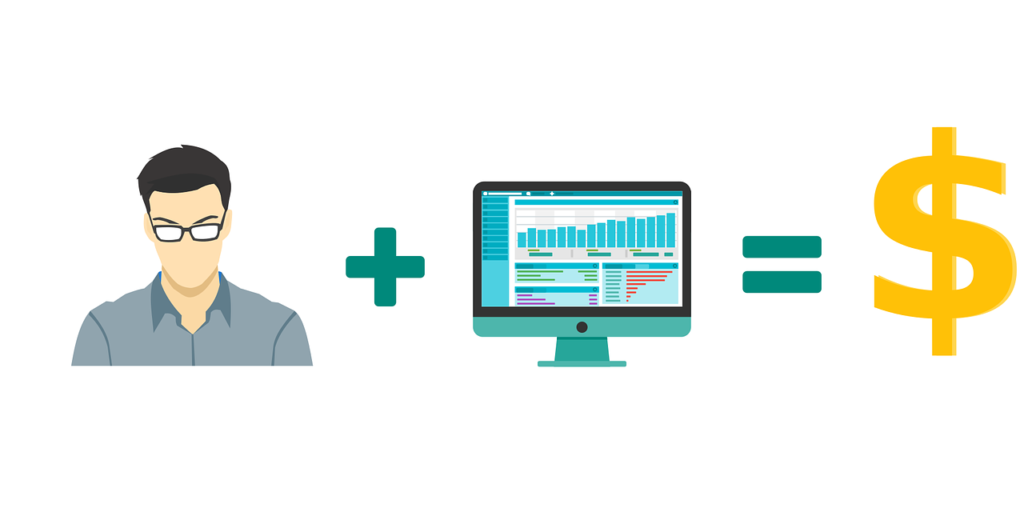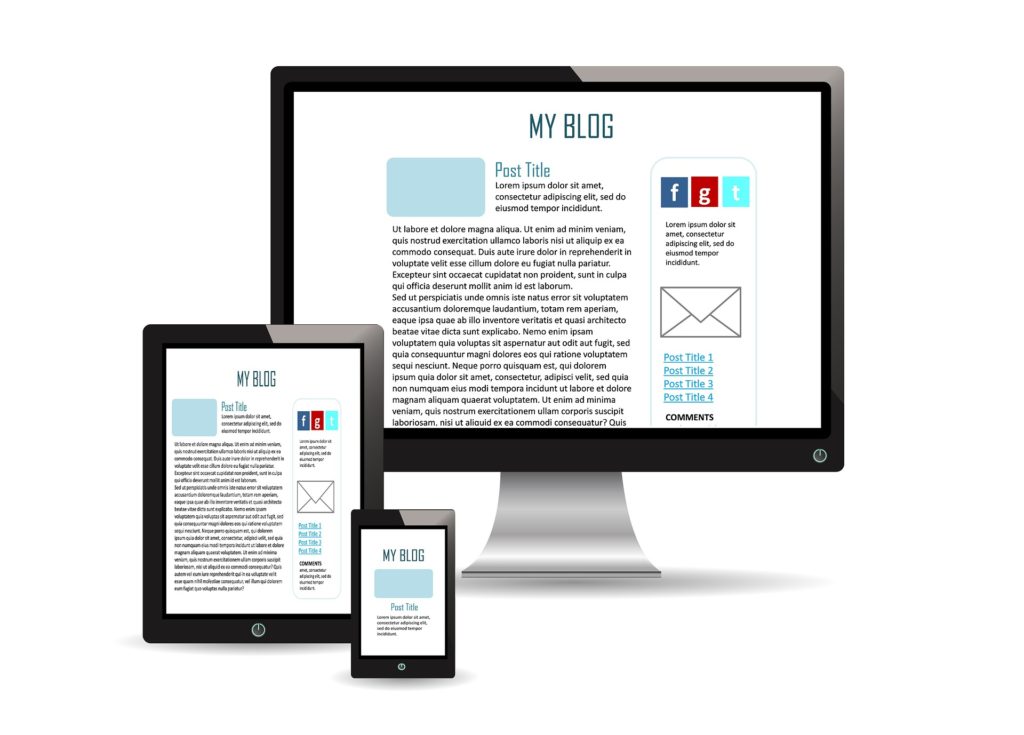Blogging can be for anyone. You can be looking at blogging as a hobby during your free time or as a means of making a business. Either way, it offers a highly personalized medium where you can express your thoughts on any topic you choose. What makes blogging such a unique experience is the ability to gain supporters, and sometimes even money, just by sharing your voice on what interests you. You would be surprised at how many people are willing to read what you have to say and it is one of the most rewarding things to know that people care about.
Besides the opportunity to voice your thoughts on an open platform, blogging has many rewards. Since writing makes up the bulk of blogging, you can improve on your writing and communication skills. It is always worthwhile to improve in skills you will be using every day. Aside from continuously learning, blogging allows you to get involved in a unique and personalized community. You are bound to find individuals who share common interests. Networking with others allows you to not only make new online friends, but it also helps you build connections that can strengthen your blog later on. And with a more trafficked blog comes opportunities to make money. Whether receiving profits from your blog is the main goal or just a bonus, being paid for blogging can be one of the greatest reasons to start a blog today.
Although starting a blog may seem straightforward, there are steps to consider to set up a successful platform. The decisions you make going in can heavily affect the rewards that come out. Read on to learn how to start a blog and how to write a blog, the smart way.
How to Start a Blog Step 1. Choose to Start a Free Blog or a Self-Hosted Blog
When you write a blog, you have to choose whether you want to start one for free or invest a small amount for a self-hosted blog. Each option has its pros and cons.
A free blog is hosted on a platform that does not charge you for creating one, such as blogger.com or wordpress.com. These platforms are best for beginners who want to test out blogging to get a feel for it. A free blog is also recommended if you are not completely sure if blogging is for you. You do not want to invest money in starting a blog only to find out you don’t enjoy it.
If you do choose to pursue blogging, using a free blog platform has its limits. You have limitations when it comes to features, plugins, content and memory space. Free blog hosts do not offer a variety of features to personalize your blog which is inconvenient and hindering when establishing your brand. Part of this limitation includes the inability to create a domain name without the added-on hostname such as xyz.blogspot.com.
In addition to limited personalization, there are restrictions on the type of content you can publish. If you happen to violate the Terms of Service for the platform, your blog can be terminated or suspended. This leads to your loss of followers and missed business opportunities.
Unlike a free blog, a self-hosted blog is one you have to pay to have hosted on a blog platform, such as on wordpress.org or ghost.org. This type is recommended if you are looking to create a business from your blog because you have access to unique features and more control over your site. With the additional cost of a self-hosted blog, you can create a personalized domain name without the added hostname, such as xyz.com, and a fully customizable blog layout which can help with professionalism. You also do not have to stress about possibly violating rules that restrict your content. Another huge advantage of self-hosted blogs is the ability to create a revenue through means such as ads.
When choosing between a free blog and a self-hosted blog, it all comes down to your plans and goals for your blog and use them to decide which type suits your motives best.
Step 2. Register on the Hosting Platform of Your Choice
After deciding which blog host suits you best, register on the site by setting up an account.
For a self-hosted blog, you will also choose a plan that seems most appropriate for you and pay to get your blog started.
How to Start a Blog Step 3. Set up Your Blog Settings
For a free or self-hosted blog, choose a domain name that describes the content of your blog. Let it be descriptive and relevant. It is also advisable to avoid long names and to opt for more common top-level domains, such as .com, .net or .org if you have this option, to make it easier for readers to reach your site.
Then, choose a theme for your blog. Free blogs offer very limited selections of themes compared to self-hosted blogs. Self-hosted blogs offer a greater variety of themes and they allow you to fully customize your space if you do not want a pre-designed layout.
If you choose a self-hosted blog, decide on any plugins you would like to add based on features that work for you and your needs. A common choice is a social media sharing plugin to help drive traffic to your blog.
Step 4. Test Run Your Blog
Whether you are creating a free blog or a self-hosted blog, it is recommended to publish a post as a test run to ensure you understand how to use the platform and are content about the layout. Try out different fonts and layouts, practice adding images, and consider any signature openings or closings for your blog. These allow you to create a uniform and visually-appealing space that promotes your brand effectively and attracts readers.
Step 5. Create a Homepage for Your Blog
Create a homepage to provide readers a preview of what your blog is about and what type of content readers can expect. Capture your audience’s attention and let them know why your blog is worth their time. A clean and professional homepage ties your entire site together. Not only does it look more visually appealing, but having an official homepage portrays you as a credible and relevant blogger people would want to follow. Also, do not forget to take this opportunity to add some character to your blog as the homepage is one of the most visited and most telling pages on your site.
Step 6. Set up Navigation
Navigation around your blog is important. Clear and smooth navigation options allow your readers to know where they need to go to find certain information. If your blog is not easy to navigate or find specific topics is difficult, losing followers and loyal supporters are likely.
A popular navigation method is through a menu bar. Choose a menu style or layout that compliments the style of your blog and also offers sensible navigation. Include distinguished and notable categories of blog topics for your menu. Be sure to choose menu labels that are straightforward and to avoid similar or overlapping menu sections.
Learning how to start a blog, be sure to sort your posts in the corresponding menu sections to better organize your blog and to improve the users’ experience.
Step 7. Establish a Content Strategy and Start Writing Your Blog
A smart technique to employ before you kick off your blog posts is to plan a posting schedule and your content. Create a schedule that identifies when you will write and publish specific posts. This allows you to manage your time more effectively and to stay on track. Also, having a posting schedule allows readers to know when to expect content from you. This presents you as a reliable and dedicated blogger. This reputation makes it easier for your audience to trust your content, and it helps you gain supporters and grow your business.
After creating a content strategy, follow through with your schedule. Start writing content while keeping in mind what it is you want to share, to who you want to share it with and why you want to spread the word. Reminding yourself of why you want to blog about a certain topic helps you stay motivated especially at the start of your blogging career. The process on learning how to start a blog is typically slow, but remaining consistent and patient will eventually lead to the impressive numbers you have always envisioned.
Step 8. Promote Your Blog
Promoting your blog means directing more traffic to your work. Some methods to promote your blog include sharing through social media, word of mouth, links from other blogs or notable sites and SEO search results.
Posting social media updates regarding new content on your blog notifies your followers to check out your blog. Also, posting about upcoming blog content keeps your audience not only informed but excited for what is to come. It encourages people to return to your blog and it interests new readers to check out your content. You can promote your blog on social platforms through methods like posting in Facebook groups, utilizing Twitter hashtags or posting pins on Pinterest.
Another effective way to increase visitation to your blog is by establishing connections with other bloggers or writers. Doing so presents the opportunity to have others link your blog in their content so you can be seen by a greater audience. Of course, reciprocating the favor is highly recommended. What is even better is to have your blog cited in a notable site that has already been recognized as such by Google. What this allows is for Google to believe that your content is worthy and valuable since it has been referenced by a credible source. This is great for search engine optimization and getting your blog to the top of Google search results.
If you want to focus more on SEO traffic, consider factors like whether your blog is mobile-friendly, and keywords used in your content, headings and menu labels. Performing keyword research provides insight as to what is relevant to your targeted audience. It is important to ensure that your content aligns with your keywords, however. Doing so tells Google that your content is relevant for searchers and the chances your blog is presented on the first page of search results increase significantly.
Another common method to encourage previous visitors to regularly return to your blog is to create an email list. Working through an email marketing software, such as convertkit.com, allows you to utilize acquired emails to send updates about your blog and exclusive content to maintain loyal supporters. If you want to start an email list, it is important to make signing up seem appealing and worthwhile. Let your readers know what they will gain from being added to the email list or even touch on how signing up helps you out so you can continue providing quality content for readers. Make your blog a positive experience.
Step 9. Make Money from Writing a Blog
Most methods for making money from writing a blog rely on having a decent following. You do not need to have a huge number of followers, but having a solid number of supporters who trust your content help you profit from your content.
One way to make money is to display ads on your blog. You get paid when visitors view or click on the ads. Something to consider is to display ads that are relevant to your topic to keep your blog relevant.
Promoting products you truly believe are worthwhile is another way to profit from your blog. Utilizing affiliate marketing works well if you are honest. Working with companies you stand by and would recommend to readers makes profiting more likely and establishes a stronger, trusting relationship with your audience.
Another final method to make money from your blog is to sell products that relate to your content. Use your blog as a platform to prove why investing in your product or service is worthwhile.
Although profiting from your blog is appealing, it is crucial to remember why you are blogging in the first place. Do not get carried away and turn your blog into a promotional, ad-filled space. This will only cause you to lose followers, which in turn, eliminates chances of profits. It ultimately puts you in a difficult situation where it is hard to gain back trust and respect from readers.

Conclusion
As previously iterated, blogging is one of the most versatile hobbies or business opportunities out there. The ability to choose your own areas of focus, establish a schedule that works for you, and build connections with your audience make the experience extremely rewarding. While these benefits are hard to overlook, taking the time to properly set up and learning how to start a blog is crucial. Every decision at the beginning can dictate the success of your platform. From deciding between a free blog or a self-hosted one to creating your content strategy, all of your choices affect aspects such as who supports your work and whether you can successfully profit from blogging. Fortunately, the tips and advice provided in this guide will allow you to make decisions that fulfill your goals as a blogger.
Navigating the world of blogging on your own can be a lot more difficult than expected. However, by following our guidelines, establishing your own platform will feel as rewarding as it truly is. Avoid the discouragement many unknowledgeable bloggers suffer through and make smart, goal-oriented decisions from the start.





